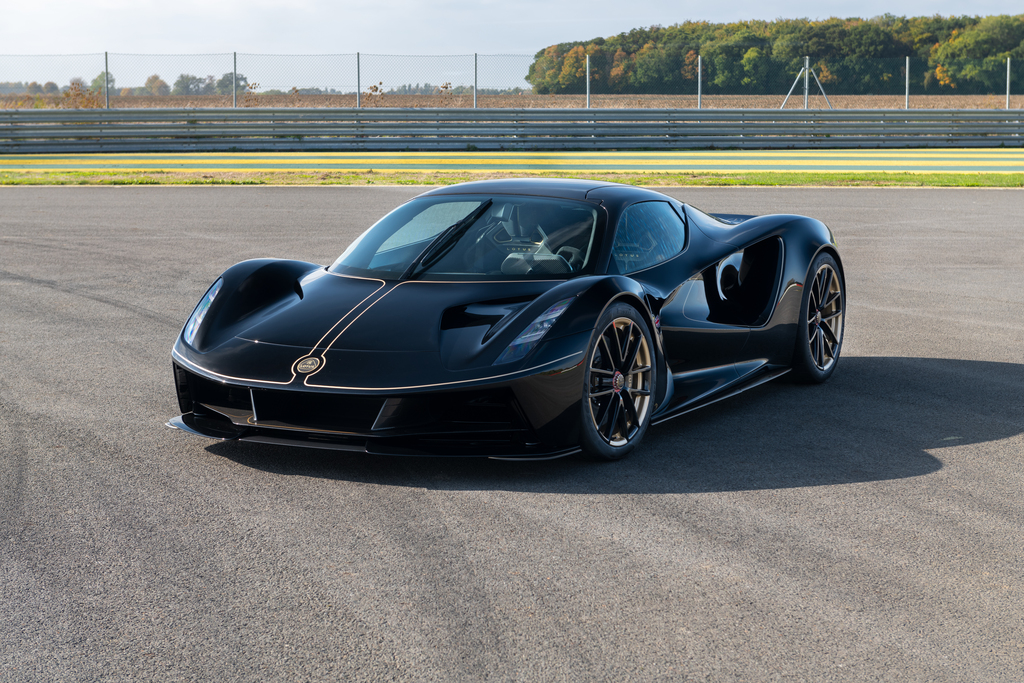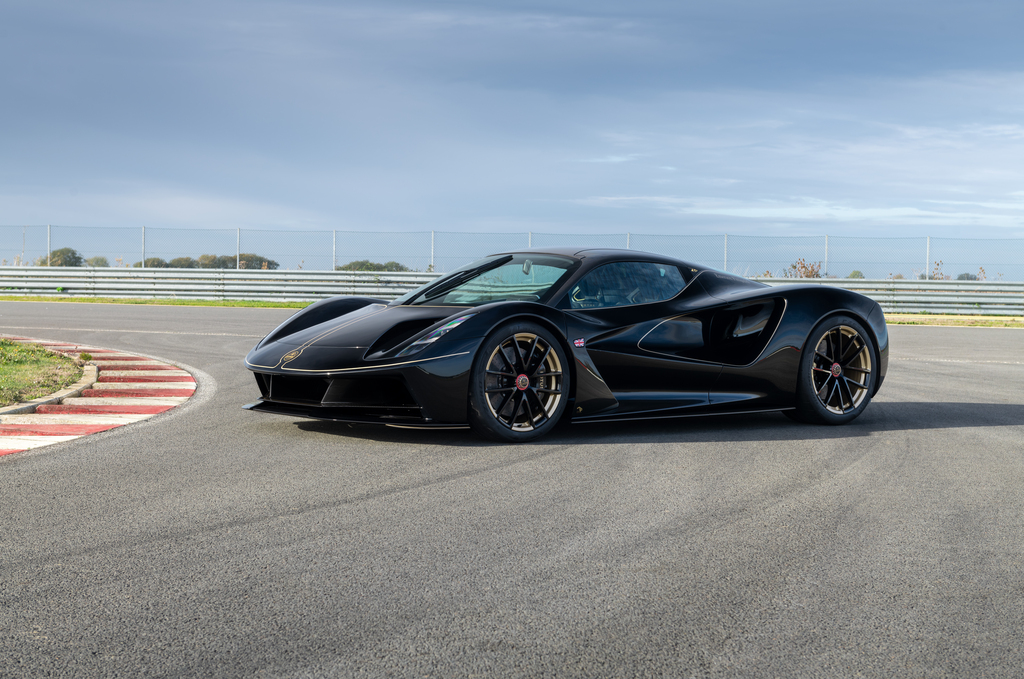Lotus pays tribute to Emerson Fittipaldi with a new ultra-limited Evija Hypercar
The world’s most powerful production car—the stunning Lotus Evija hypercar—now delivers even more exclusivity and desirability. Share
Inspired by the past to enhance the future, Lotus has unveiled the Evija Fittipaldi, a tribute to one of the greatest car-and-driver pairings that Formula 1 has ever seen. That driver is, of course, Emerson Fittipaldi, the young Brazilian racer who joined Lotus and became a legend, cementing his place in F1 history in 1972. Behind the wheel of the now-iconic Lotus Type 72 and winning five of that season’s 11 races, Fittipaldi secured the Drivers’ Championship for himself and the Constructors’ Championship for Team Lotus.
Exactly 50 years on, the Lotus Evija Fittipaldi is a fitting celebration of that partnership. Just eight examples of the all-electric two-seater are being hand-built at Hethel in Norfolk, UK—the global HQ of Lotus sports car design and manufacturing—and all are sold. Customer deliveries will begin early next year. It is the latest project from Lotus Advanced Performance, the bespoke design and experiential division of the business launched earlier this year.

Showcasing the world-famous black and gold colour scheme – also 50 years old in 2022—the hand-painted exterior and numerous other unique design features have been created to commemorate this amazing collaboration. They include a hand-tinted plan view of the Type 72 etched into the exposed carbon fibre roof, and Fittipaldi’s signature hand-stitched into the dashboard.
And perhaps the most emotive detail of all is the rotary dial on the floating central instrument panel. It has been hand-crafted from recycled original Type 72 aluminium, ensuring a genuine piece of the iconic F1 racer is part of each Evija Fittipaldi. Such a special car deserved a special world premiere; customers, their families and other VIP guests have taken part in an exclusive, once-in-a-lifetime experience day at Hethel to celebrate the launch of the new car and the iconic Type 72.

The bespoke specification of the Lotus Evija Fittipaldi starts with its unique paint finish, which includes its designation written on the body work in gold lettering to the side of the rear window. Complementing it are black and gold ‘Type 72’ wheels complete with anodized centre lock surrounds – red on the left side of the car and green on the right – as well as black and gold brake calipers.
Decals that celebrate the Type 72’s race victories from the 1972 season are presented on the active rear wing, while a number 8 has been applied to the B-pillar. Fittipaldi raced with that number on his car during the 1972 season, including for his win at the British Grand Prix. A carbon and gold Lotus nose badge completes the exterior styling. Inside, the theme of luxury and bespoke design continues. Black leather interior with gold contrast stitching can be found throughout the cabin, along with exclusive roof liner stitching, plus gold finishes to the air vent surrounds, centre rotary dial, start/stop button and pedals.

The car has been developed with the generous support of Classic Team Lotus, the historic motorsport business run today by the family of Lotus founder Colin Chapman to maintain and operate Lotus F1 cars. Also based in Hethel just across the road from Lotus, it hosted the gala dinner at the launch event.
Despite its incredible power and performance, the driver remains at the centre of the Lotus Evija experience, just as it was for the Emerson Fittipaldi and the Type 72. The technical specification and performance figures of the Lotus Evija Fittipaldi are truly astonishing; more than 2,000 PS makes it the most powerful series production car in the world, creating more than 1,700Nm of torque. The 0-62 mph (0-100 km/h) is completed in under three seconds, and 0-186 mph (0-300 km/h) takes nine seconds from a standing start. The limited maximum speed is 217 mph (350 km/h). The full technical specification is detailed in the table below.

From one world champion to another, earlier in the week Jenson Button visited Lotus to test drive the Evija and Emerson’s Type 72 on the famous Hethel test track. It was the first time Jenson had seen the Evija in production and took one out on track to give it a shake down before the launch of Evija Fittipaldi. Quickly getting up to speed Jenson drove the car around the 2.2-mile test track, testing the car’s ride, handling and performance. He was also seen unleashing the power in several standing starts. Full of praise when he jumped out of the driver’s seat of the world’s most powerful production car.

A stunning piece of contemporary automotive design – the work of a team led by Lotus Design Director Russell Carr—the Evija features a dramatic Venturi tunnel through each rear quarter, giving it a truly breath-taking presence. This ‘porosity’ means optimised airflow, with air channelled not just over, under and around the Evija but through it, maximising downforce while minimising drag. Its front splitter aids grip while channelling cooling air to the battery pack, E-motors and brakes, and active aero features such as a Formula 1-style DRS (Drag Reduction System) bestow the Evija with cutting-edge performance. With driving dynamics overseen by the team of Gavan Kershaw, the world-renowned Vehicle Attributes Director for Lotus, the Evija is a car like no other.

The first Lotus road car to feature a one-piece carbon fibre monocoque chassis, the cabin – from the fully adjustable race-style seats to the multi-function steering wheel – is the very pinnacle of motorsport-inspired road car design and technology. Just as the Lotus Evija is defining a new era of pure electric performance, so the Lotus Type 72 remains the most successful racing car not just of its day, but in F1 history.



